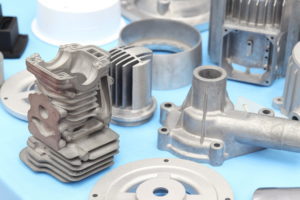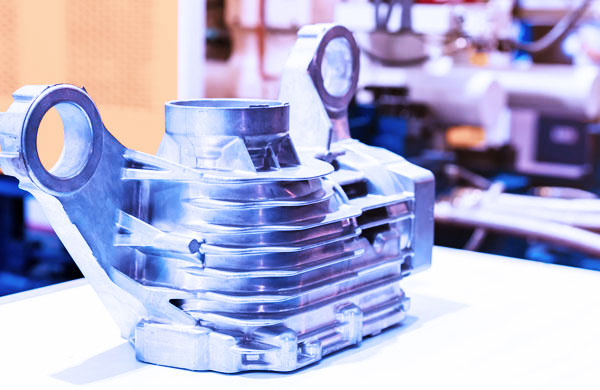Stahl Specialty Company for Beginners
Stahl Specialty Company for Beginners
Blog Article
The Best Strategy To Use For Stahl Specialty Company
Table of ContentsThe 8-Minute Rule for Stahl Specialty CompanyWhat Does Stahl Specialty Company Do?The Definitive Guide for Stahl Specialty CompanyGet This Report on Stahl Specialty CompanyFacts About Stahl Specialty Company UncoveredStahl Specialty Company Things To Know Before You Buy

If you're developing a steel product, you've likely taken into consideration utilizing aluminum as the base product. It has a high strength-to-weight ratio, good corrosion resistance, good formability, and visual appeal. These variables have actually resulted in its enhanced appeal over the last few years. Pure aluminum has restricted applications, so it is typically integrated with various other aspects, such as silicon, magnesium, and manganese to develop alloys.
Various components and amounts produce a large selection of preferable physical and chemical residential properties. And the Aluminum Organization (AA), based in The United States and copyright, has actually developed specs that control aluminum alloys' make-up, residential or commercial properties, and classification. There are two types of light weight aluminum alloys functioned and cast. Foundry workers create these alloy kinds in various means, which dramatically affects their qualities.
The 8-Minute Rule for Stahl Specialty Company
Cast aluminum alloys are made by melting pure light weight aluminum and incorporating it with other steels while in fluid type. Then the mix is put into a sand, pass away, or financial investment mold. After solidification, the steel is gotten rid of from its mold. At this phase, it is in either its last form or as a billet or ingot for further handling.

160.0 represents a cast with a minimum of 99.60% aluminum. The 4th digit, which comes after the decimal point, defines if the alloy is a casting (xxx. 0) or an ingot (xxx. 1). Wrought light weight aluminum alloys also start by integrating molten aluminum with various other steels. In comparison to cast alloys, nevertheless, they are developed right into their last form via processes such as extrusion, rolling, and bending after the metal has strengthened right into billets or ingots.
There are numerous minor distinctions between functioned and cast aluminum alloys, such as that actors alloys can have extra significant amounts of other steels than functioned alloys. The most remarkable difference in between these alloys is the manufacture procedure via which they will go to provide the last product. Other than some surface area therapies, cast alloys will certainly leave their mold in practically the specific strong kind desired, whereas wrought alloys will undergo a number of adjustments while in their solid state.
If you assume that a functioned alloy may be the very best for your task, have a look at a few of our short articles that clarify more concerning particular wrought alloys, such as Alloy 6061 and Alloy 6063. On the various other hand, if you believe an actors alloy would be better for you, you can discover more regarding some actors alloys in our Alloy 380 and Alloy 383 articles (coming quickly).
The 10-Minute Rule for Stahl Specialty Company
When selecting an aluminum foundry for your production demands, it's essential to study a number of aspects. One of one of the most vital elements to take into consideration is the experience and competence of the shop. Aluminum Casting. Choosing a shop who has the appropriate knowledge of the light weight aluminum casting procedure, and the portfolio to reveal for it, helps to have an effective outcome for your task
Having the experience and industry knowledge to craft your spreadings for optimal production and high quality end results will streamline the project. Making light weight aluminum castings requires a complicated set of processes to achieve the ideal results. When picking a brand-new aluminum shop to companion with, guarantee they have considerable market experience and are knowledgeable about all elements of the aluminum spreading procedure: layout, manufacturing, material analysis, and item screening.
The foundry must also have a tested record of delivering exceptional products that meet or go beyond customer expectations. Quality assurance should likewise go to the top of your listing when picking an aluminum shop. By collaborating with a certified factory who complies with the standards for high quality control, you can safeguard the stability of your product and guarantee it fulfills your specifications.
By selecting a business that offers solutions that meet or surpass your product needs, you can be certain that your job will be finished with the utmost accuracy and effectiveness. important link Different components call for different manufacturing methods to cast aluminum, such as sand casting or pass away spreading.
Everything about Stahl Specialty Company
Pass away casting is the name provided to the procedure of developing complex metal elements through usage of molds of the part, also recognized as dies. The process makes use of non-ferrous metals which do not include iron, such as aluminum, zinc and magnesium, due to the desirable properties of the metals such as reduced weight, greater conductivity, non-magnetic conductivity and resistance to corrosion.
Pass away spreading production is quick, making high production degrees of parts simple. It creates more elements than any kind of other process, with a high level of accuracy and repeatability. To get more information regarding die casting and die casting products made use of while doing so, continued reading. There are three sub-processes that drop under the category of die spreading: gravity pass away spreading (or long-term mold casting), low-pressure die casting and high-pressure die casting.
No matter the sub-process, the die spreading procedure can be damaged down into six steps. After the purity of the alloy is tested, dies are created. To prepare the craves casting, it is essential that the dies are tidy, so that no residue from previous productions continue to be. After cleaning, the ejection lubrication is related to the die to ensure a smooth release.
Not known Factual Statements About Stahl Specialty Company
The pure metal, likewise referred to as ingot, is contributed to the heater and kept at the molten temperature of the steel, which is after that moved to the shot chamber and infused right into the die. The stress is after that kept as the steel strengthens. As soon as the steel solidifies, the cooling procedure begins.
(https://www.mixcloud.com/stahlspecialc/)
The thicker the wall of the component, the longer the cooling time due to the quantity of indoor steel that also requires to cool. After the part is totally cooled, the die halves open and an ejection system presses the part out. Complying with the ejection, the die is shut for the next shot cycle.
The flash is the additional material that is cast throughout the process. This need to be cut off using a trim tool to leave just the main element. Deburring gets rid of the smaller sized pieces, called burrs, after the trimming process. The component is brightened, or burnished, to provide it a smooth finish.
All about Stahl Specialty Company

Zinc is among one of the most secondhand alloys for die casting as a result of its lower expense of basic materials. It's also among the more powerful and stable steels. Plus, it has excellent electrical and thermal conductivity. Its corrosion resistance additionally allows the components to be long-term, and it is among the more castable alloys as a result of its lower melting point - Aluminum Castings.
As stated, this alloy is one of one of the most typically utilized, yet produces will, at times, choose aluminum over zinc due to aluminum's production advantages. Light weight aluminum is extremely economical and one of the much more flexible alloys. Light weight aluminum is utilized for a number of different items and industries anything from window frameworks to aerospace materials.
Report this page